We truly enjoyed watching the activities in the Warao village from sunrise to sunset and sleeping in hammocks overlooking the river, even though this is not the most comfortable way to spend the night. The dwellings of the Waraos are perfectly adjusted to the climate, a wooden platform with four pillars that carry a thatched roof, so there is always a nice breeze and almost no mosquitoes. This is due to the fact that the many rivers that feed the Delta are so called “Rios Negros”, which carry an acid that is obviously not a habitat that mosquitoes prefer.
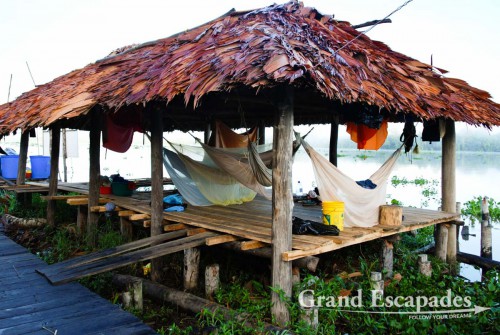
Boat Tour in the Orinoco Delta, Venzuela – Our living quarters in the Warao Village: Hammocks or “Chinchorro” turned out to be more comfortable than we expected…
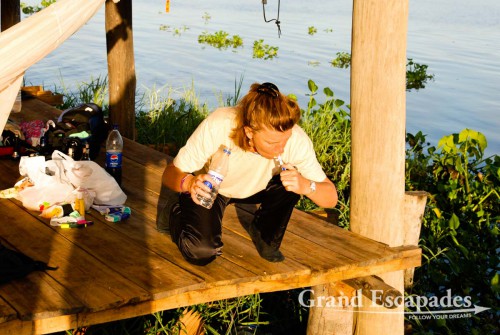
Boat Tour in the Orinoco Delta, Venzuela – When you do not have any bathroom, you just improvise ! Taking a shower meant getting a bucket full of water and pouring it down on you …
The Waraos use their native language and children only learn Spanish once they start school. Bernard, our fellow traveler, one morning organized a lesson in Warao for him, which was enchanting to watch, with the older kids translating into Spanish.
The Waraos have big families, lots of children play together and take care of each other all day. Once we watched a two-year old kid falling off the blanks that connect the houses on stilts and ending up in the swamp a meter below. The other kids simply pulled him out, took him to the river and washed off the mud. No adult intervened, except us following them anxiously.
Although the village has a generator that is turned on for four hours in the evening, life pretty much is determined by sunset and sunrise. With electricity available, naturally TV determines the evenings of the families. They sit together on the floor and watch Venezuelan programs and even sometimes DVDs.
The Delta is the natural habitat of a huge variety of animals. We got to see red monkeys, dolphins, parrots and other exotic birds, but the stay in the Waroa village was exceptional. “Warao” means the people of the water and this is exactly how they live. We spoke to other travelers who stayed in “Campamentos” in the middle of nowhere, suffering from mosquito attacks and completely isolated from the local community. They surely missed THE highlight of the trip!
The only thing that bothered us was the many roosters of the families which woke us at 05:00 o’clock and would not stop for hours. We were making jokes about eating the “Gallos” for dinner. The gossip must have reached them, since they were definitely less active the next morning!
The second day we did a long boat trip to the estuary of Delta especially to see an Ibis colony, which are indeed beautiful red exotic birds. If we did the trip again we would simply stay in the village, because this trip takes hours and the banks of the river look very much the same.
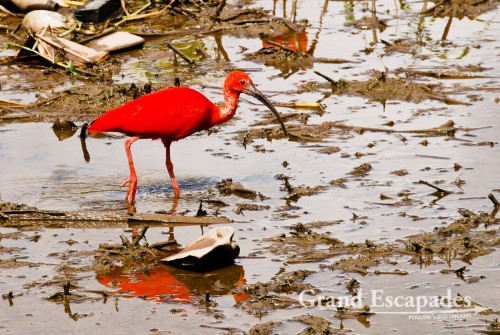
Boat Tour in the Orinoco Delta, Venzuela – Going down the river towards the ocean at the estuary of the Orinoco, you get to see a colony of Red Ibis …
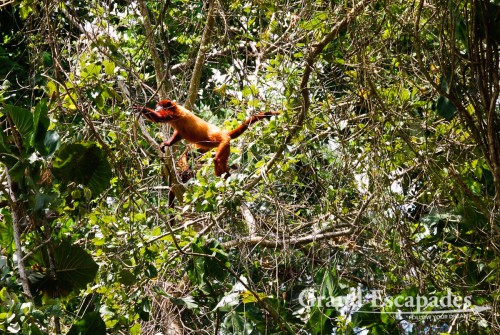
Boat Tour in the Orinoco Delta, Venzuela – Red Monkeys or MOnos Rojos are one of the attraction in the Delta …
One of the first things that struck us was plants that were floating on the river, but to our surprise they were moving upriver and then down the river. It took a while until we figured out that this movement was influenced by the tide of the near ocean, with water level increasing or decreasing by more than one meter.
The few hours that electricity was available we used to download photos to our computer and sort them out. This turned out to be a major attraction for the kids of the village since they could see their photos on the computer.
We have mentioned the issue of collecting litter before, but here, in these remote villages it was even more obvious, plastic garbage everywhere. The method to deal with it is to collect it and burn it in the woods by pouring gasoline for it. Rather disturbing was to see how animals are treated. The dogs straying the villages are near starvation and not a pretty sight and we almost felt nauseous when we watched the joints to all these crabs being broken so that they cannot pinch anymore and were left like this until to be cooked.

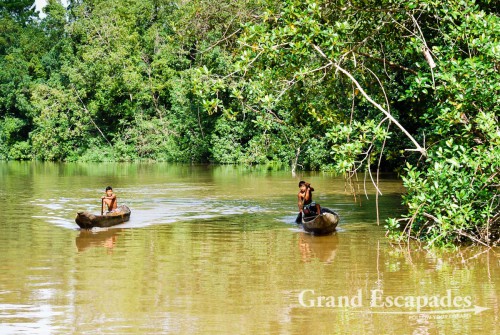
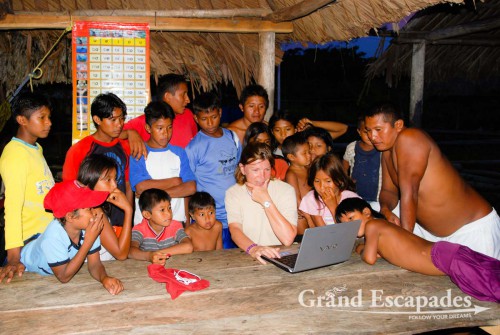
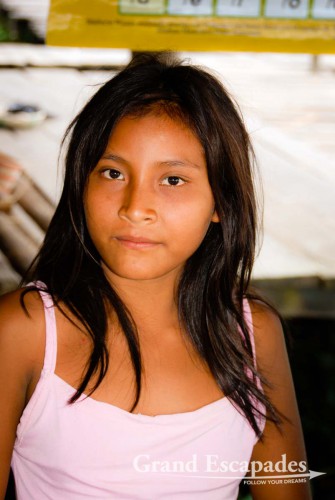
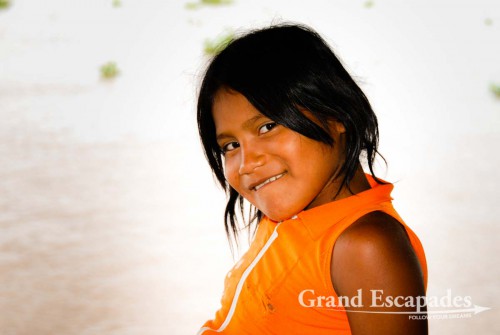
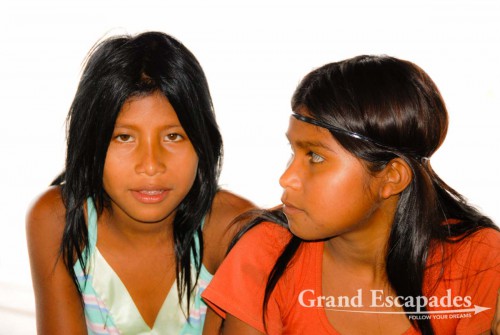
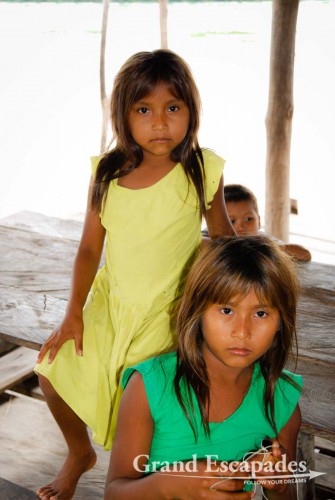
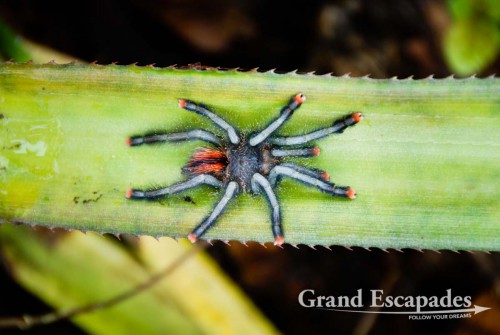
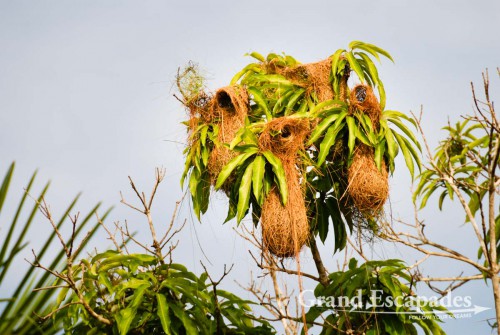
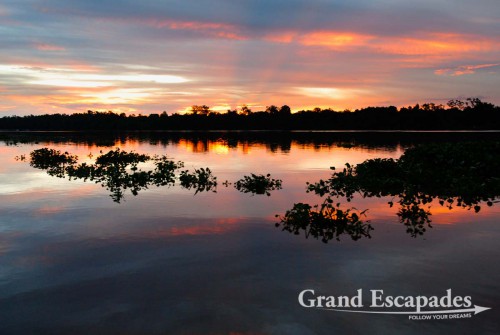
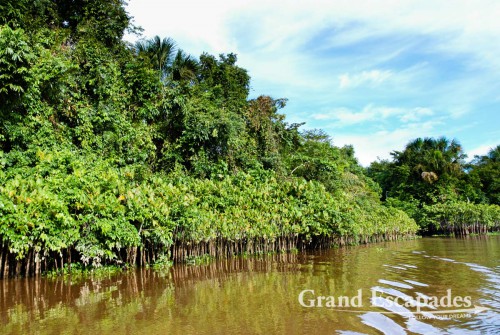
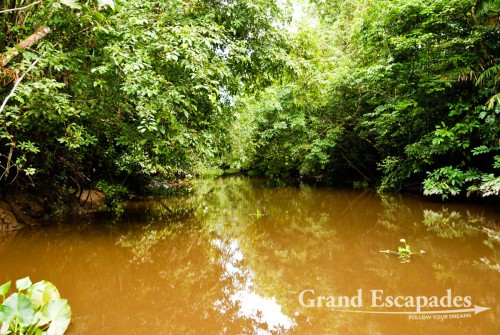
No comments yet.